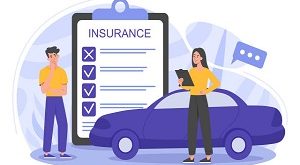Buying a used car can be an excellent way to save money while still getting a reliable vehicle. However, the process can be daunting if you’re not familiar with what to look for and the steps involved. This guide will walk you through everything you need to know to make an informed and confident purchase.
1. Set Your Budget
Before you start shopping for a used car, determine how much you can afford to spend. Consider not only the purchase price but also ongoing costs such as insurance, maintenance, and fuel.
Tips for Budgeting:
- Use online calculators to estimate your monthly payments if you plan to finance the car.
- Don’t forget to factor in taxes, registration fees, and any potential repairs.
- It’s advisable to allocate about 10-15% of your budget for unexpected expenses.
- Decide if you will be paying in cash or financing the car. Financing options may require a down payment, which should be included in your budget planning.
2. Research and Choose the Right Car
Start by identifying what type of car best suits your needs. Consider factors such as size, fuel efficiency, reliability, and features.
Research Tools:
- Consumer Reports: Offers detailed reviews and reliability ratings.
- Kelley Blue Book (KBB): Provides pricing information and car reviews.
- Edmunds: Offers expert and user reviews, as well as pricing guides.
- AutoTrader: Useful for finding used cars in your area.
Key Considerations:
- Vehicle Type: Determine if you need a sedan, SUV, truck, or another type based on your lifestyle.
- Usage: Think about how you will use the car (e.g., daily commuting, long trips, off-road driving).
- Features: List must-have features (e.g., safety systems, infotainment, all-wheel drive).
- Fuel Economy: Consider the long-term cost of fuel and choose a car with good mileage.
3. Find Reliable Sellers
There are several places to buy a used car:
- Dealerships: Typically offer certified pre-owned vehicles that have undergone inspections.
- Private Sellers: Often have lower prices but come with more risk.
- Online Marketplaces: Websites like Craigslist, eBay Motors, and Facebook Marketplace can be good sources, but require caution.
Certified Pre-Owned (CPO) Programs:
- These cars have been inspected and refurbished by the manufacturer or dealer.
- They often come with warranties, which add a layer of security.
Trusted Dealerships:
- Look for dealerships with good reviews and a reputation for fair dealing.
- Visit the dealership’s website to see their inventory and any available CPO options.
- Ask friends or family for recommendations.
4. Check Vehicle History
Once you’ve found a car you’re interested in, obtain its history report using services like Carfax or AutoCheck.
Key Information to Look For:
- Accident History: Determine if the car has been in any accidents and the severity of the damage.
- Service Records: Check for regular maintenance and any major repairs.
- Ownership History: Find out how many previous owners the car has had.
- Title Status: Ensure the car has a clean title and is not listed as salvage.
- Mileage: Verify the odometer reading to ensure it hasn’t been tampered with.
5. Inspect the Car
Even if the car appears to be in good condition, a thorough inspection is essential.
Exterior:
- Look for dents, scratches, and rust.
- Check that all lights and signals are working.
- Inspect the tires for tread wear and ensure they are evenly worn.
- Examine the windshield and windows for chips and cracks.
- Check the condition of the paint and look for signs of repainting which might indicate past damage.
Interior:
- Check the condition of the seats, dashboard, and carpets.
- Test all electronics, including the radio, air conditioning, and windows.
- Sniff for any unusual smells that could indicate mold or smoke damage.
- Ensure all controls and switches work properly.
- Test the seat belts to make sure they function correctly.
Under the Hood:
- Inspect the engine for leaks or corrosion.
- Check the fluid levels (oil, transmission, coolant, brake fluid).
- Look at the belts and hoses for any signs of wear or damage.
- Examine the battery for corrosion and ensure it is securely mounted.
- Check for any unusual noises or vibrations when the engine is running.
Test Drive:
- Take the car on various road types to see how it performs.
- Pay attention to the brakes, steering, and suspension.
- Listen for any unusual noises.
- Test the car’s acceleration and braking.
- Check the alignment by briefly letting go of the steering wheel on a straight road (while ensuring safety).
- Make sure the transmission shifts smoothly.
6. Get a Professional Inspection
Even if you feel confident in your assessment, it’s wise to have a professional mechanic inspect the car. This can uncover potential issues that you might miss and give you bargaining power.
Professional Inspection Tips:
- Choose a mechanic who is experienced with the make and model you are considering.
- Ensure the mechanic checks all major systems, including the engine, transmission, brakes, and electrical system.
- Ask for a written report detailing any issues found and the estimated cost of repairs.
7. Negotiate the Price
Armed with information from your research and inspection, you’re in a strong position to negotiate.
Negotiation Tips:
- Be polite but firm.
- Point out any issues or repairs needed.
- Use pricing guides (like KBB) to support your offer.
- Be prepared to walk away if the seller won’t meet your price.
- Consider additional costs like registration and taxes when negotiating the final price.
- Start with a lower offer than you’re willing to pay to leave room for negotiation.
8. Complete the Paperwork
Once you’ve agreed on a price, it’s time to finalize the sale.
Essential Documents:
- Bill of Sale: Outlines the terms of the sale.
- Title Transfer: Sign and submit the title transfer documents.
- Emissions and Safety Certificates: Ensure the car meets local regulations.
- Financing Paperwork: If applicable, complete any loan documents.
Insurance:
- Obtain insurance before driving the car home. Some dealerships can help with this on-site.
- Contact your insurance provider to add the new vehicle to your policy.
- Ensure you have proof of insurance before taking possession of the car.
Registration:
- Register the car in your name with your local DMV.
- Pay any applicable taxes and fees.
- Make sure to receive temporary tags if needed until the permanent ones arrive.
9. Final Steps
After purchasing your used car, there are a few final steps to ensure everything is in order.
Maintenance:
- Schedule a comprehensive maintenance check-up.
- Address any immediate repairs or maintenance needs.
- Change the oil and check all fluid levels, even if the car seems to be in good condition.
- Replace worn tires, brake pads, or other components as necessary.
Documentation:
- Keep all paperwork related to the purchase, including the bill of sale and title transfer documents.
- Create a file for maintenance records to help with future resale or to keep track of work done on the car.
Customization:
- Consider any accessories or upgrades you might want, such as new floor mats, seat covers, or a better sound system.
- Install any necessary safety features that might be lacking, such as a backup camera or parking sensors.
Conclusion
Buying a used car requires careful research, inspection, and negotiation, but with the right approach, you can find a reliable vehicle that fits your budget and needs. Follow this guide to navigate the process with confidence and drive away in a car that you’ll enjoy for years to come. Whether you’re purchasing from a dealer or a private seller, being thorough and informed will ensure a successful and satisfying experience.


